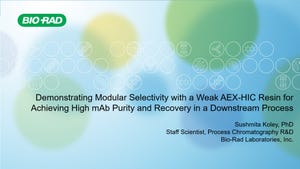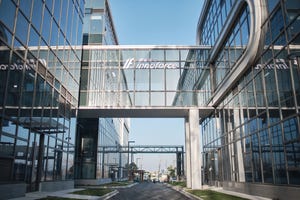
Sanofi is constructing an insulin production facility at its BioCampus in Höchst with a phased investment of €1.3 billion. The 36,000 square-meter facility will employ highly qualified specialists and is expected to open by 2029. The site will produce Sanofi’s Lantus insulin, which is a long-acting insulin used to control high blood sugar in adults and children with diabetes mellitus.
“This facility will replace the existing insulin production buildings,” a spokesperson for Sanofi told BioProcess Insider. “The rationale behind this investment is to maintain production for people living with diabetes, with demand and patient needs continuing to grow, even outside of Glucagon-like peptide-1s (GLP1s). Worldwide, about one in ten people is affected by diabetes. That means insulins are very much needed.”
For the French firm, the Höchst BioCampus is one the largest manufacturing and supply facilities. The site covers its entire insulin production chain, from active pharmaceutical ingredient (API) manufacture to cartridge filling, pen and auto-injector assembly, and global distribution. The company supplies patients in 80 countries with 20 different insulin products and employs over 4,000 employees.
“What we're doing in immunology is so unique and different,” the spokesperson added. “Look at Dupixent (dupilumab) seven years into its launch. Earlier this month, we had the approval in Europe for Dupixent as the first ever targeted therapy for patients with chronic obstructive pulmonary disease (COPD). This is a new opportunity for us to bring to market a treatment option throughout the EU to the more than 200,000 adult patients with uncontrolled COPD.”
“Several milestone achievements this quarter show our continuous pipeline progress and our commitment to delivering increased R&D productivity across our whole portfolio. With more than 12 Phase III readouts planned, 13 submissions, and 9 regulatory decisions, we are clearly showing our progress and commitment to investing in patients. So, we believe immunology is our obesity. We believe we're well placed to capitalize on that, and we are very pleased with the way we're doing it.”
The expansion is supported by the German federal government, the Hessian state government, and the city of Frankfurt. Its finalization is subject to public funding and the approval of the EU grant process by the European Commission.
Rise of GLP-1s
During Bio-Europe Spring, in March 2024, industry experts including Sanofi’s global head of business development and licensing Michael Palladinetti congratulated Eli Lilly and Novo Nordisk for persisting in the GLP-1 space.
He said, “industry has a bit of fear of missing out (FOMO).” He paid “kudos to Lilly and Novo for staying in the space.” He added how innovation is “also very difficult” and that industry players need to have a “broad view.”
As such, there has been a wave of investment in the GLP-1 space, including Roche and AstraZeneca turning toward GLP-1s. The former company acquired Carmot Therapeutics for $2.7 billion, while the latter licensed a candidate from Eccogene. Meanwhile, numerous service firms have expanded their networks and capabilities to accommodate the growing demand for GLP-1–related services.
Moreover, Lilly and Novo are continuously upping capacity to meet the rising demands of GLP-1 drugs. Recently, Danish drugmaker Novo has bought a 200-acre fill/finish facility in Odense, Denmark to produce GLP-1 injection pens. This news comes days after Novo confirmed an investment of $4.1 billion to build a second fill/finish manufacturing facility in Clayton, North Carolina.
About the Author
You May Also Like









